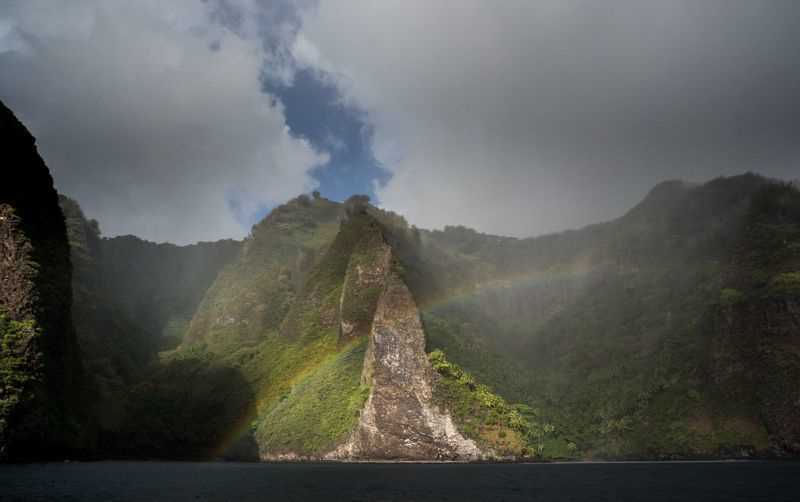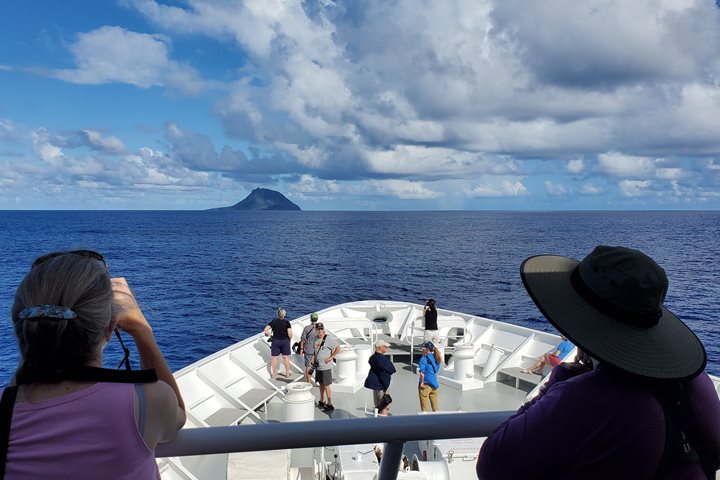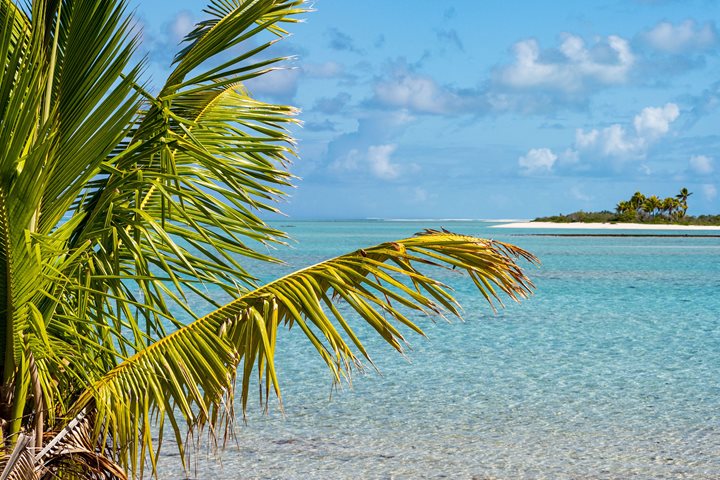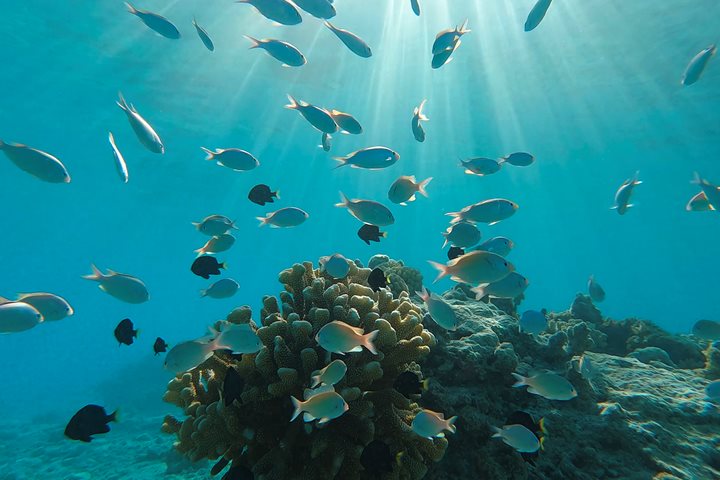The sun rose over Fatu Hiva, and our approach was spectacular. We pulled up to the village of Hanavave, which sits in the middle of a narrow valley full of towering rock formations blanketed in green. Coconut palms shimmered in the morning light and undulating cliffs stretched away from the town in both directions. This island truly rises straight from the sea.
Our birders left first and went to the southern village on this island, which is called Omoa. They spent the morning high up on the island roads searching for the Fatu Hiva Monarch, a single island endemic which is critically endangered. There are only 37 birds left in the world, so the group was ecstatic to have found one of five nesting pairs and to have watched them feed their first chick of the year.
The rest of us split our time between a waterfall hike and some time in town where we watched a demonstration of tapa cloth making. This is a traditional form of cloth made from the bark of three different trees, and the people of Fatu Hiva have preserved this art form – it is no longer practiced on the other islands of the Marquesas.
We finished the morning with a dance performance accompanied by live music.
We spent the afternoon on the water taking Zodiac cruises to admire the cliffs of volcanic basalt and also going snorkeling for our first time in the Marquesas. The cliffs under the water are just as steep as the ones above, so we could turn our attention to the fish and urchins along the rocks, or we could gaze into the deep blue of an ocean that seems to go down forever.
Sunset from the outer decks gave us a chance to say goodbye to Fatu Hiva as night fell.








